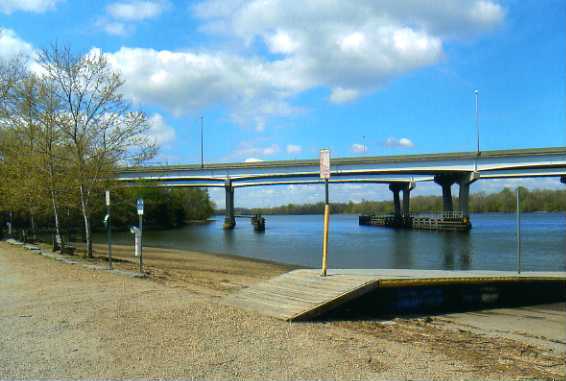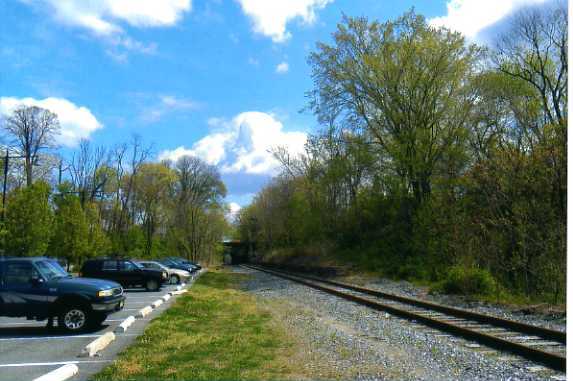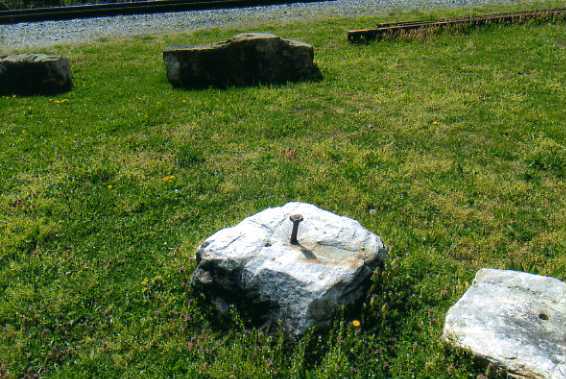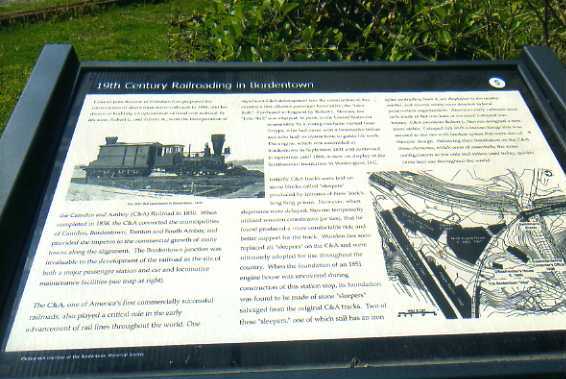|
Regional History Part 3 1700 to 1880 A.D.
Installment
6
Cont’d American/Trenton Regional History 1816-1832 BY: TOM FRASCELLA April 2012
It can not be overstated just how important the development of the steam driven power boat, which starts with John Fitch in Trenton, was to the expansion and development of early America. As an example, in 1807 it took 14 days to ship products by wagon from New York City to the N.Y. State Capitol of Albany. By sail powered river schooner it took 10 days. With the introduction of steam powered river ferries in 1808 it took 32 hours even though the craft could do a mere five miles an hour. Suddenly, goods, communication and people could move along our coastal waterways at unprecedented speeds. Recognizing the potential that had suddenly been made available the development of powered water travel quickly encouraged the building of canals to supplement the major river networks. Following the timeline we see the starting of the canal networks began almost immediately after powered ferry traffic is implemented on the Hudson and Delaware Rivers. Expansion of the water highways also allowed the U.S. for the first time to begin to tap into the huge mineral reserves of the interior. One such mineral reserve has a connection to the Trenton area. In around 1780 deposits of Anthracite coal were found in Northeast Pennsylvania. This hard form of coal was little known in colonial times but the softer Bituminous coal was known and in use. Experimentation in Pennsylvania, lead to developing furnace designs for efficiently burning this harder type of coal by 1790. Difficulty in transporting the mineral over land initially made the deposits impractical to ship to the east coast market. Instead, softer Bituminous coal was shipped to New York City through Britain. The U.S. experienced a cut off of this fuel source at the out break of the War of 1812 under scoring our energy dependence. In this segment of our history section I would like to advance the discussion of events and people that had great influence on the industrial development of the U.S. and on subsequent Italian immigration to the U.S. in the following decades. To start, two enterprising brothers from a merchant family with roots in Bucks County, Pennsylvania saw in the exposed U.S. energy dependence a national need as well as a business opportunity. The new mode of power water transportation provided a new and efficient opportunity to ship bulk materials, like coal at low cost. William and Maurice Wurts began buying up mineral rights to Anthracite coal deposits in eastern Pennsylvania in the early 1820’s. They also obtained Pennsylvania and New York charters and formed a corporation to develop a canal system to aid in bringing the mineral to the New York and Philadelphia market in 1823. The canal was known as the Delaware and Hudson Canal. As part of this developing canal system a short stretch of gravity fed rail was used to transport coal barges over land with ropes and pulleys. This system was in place by 1829. The mining of coal, the transport to the northeast market and the functioning of this short gravity rail system would all play a major part in supplying energy for the Industrial Revolution in the U.S and in particular the mid Atlantic region. 1816 saw the arrival to the Trenton area of the former King of Italy and Spain, the exiled Joseph Bonaparte. After Napoleon’s defeat Joseph choose to seek exile in the U.S. He disguised himself and entered into the country under an assumed identity in 1815. He originally settled in Philadelphia which had many Frenchmen residing there. However, he eventually selected Bordentown, to build an estate. He initially purchased 211 acres near the juncture of Crosswicks Creek and the Delaware River. Eventually expanding his holdings to 1,800 acres upon which he built several houses. He remained on the estate from 1816-1832. His wife did not accompany him to America but at various times his two daughters did visit and at least one of his grandchildren was born there. During this period he also had a mistress from Trenton named Annette Savage with whom he had two daughters born in 1821 and 1822. One of the daughters died in infancy and is buried in Trenton, the other grew to adulthood and eventually married an American Colonel Zebulon Benton. During his stay in the area Bonaparte received many important guests who enjoyed his hospitality and the atmosphere at the estate which boasted 12 miles of bridal paths and a private steam powered boat. Another notable resident of the area during this period was Papal State Consul Giovanni Satori. Mr. Satori resided at a private estate he built on the Delaware between 1800 and 1832 at which time he returned to Italy. In addition to starting several businesses while in Trenton Mr. Sartori is credited with producing and selling the first pasta in the U.S. in 1804 and building the first Roman Catholic Church in New Jersey, Mr. Sartori with a partner also purchased the former Morris estate in Bucks County and began its subdivision into what would become Morrisville. Mr. and Mrs. Sartori produced eleven children born in Trenton. Nine of his children became American citizens and through his considerable connections Mr. Sartori was able to secure for one son a rare appointment as a midshipman in the U.S. Navy in 1829. This son would become a career naval officer and served with distinction during the American Civil War rising to the rank of Fleet Commodore. Another son served as ship’s surgeon during the War aboard the Commodore’s flag ship. The Consul Himself chose to return to Italy in 1832 with his two infant daughters after the death of his wife in childbirth. History confirms that Italians were immigrating to the U.S. during 1816-1832 primarily from the Northern and Central part of Italy. In all probably not more than two thousand Italians immigrated to the U.S. during this time period. You could further describe the Italian immigrant of this period as falling into one of three categories. First, the wealthy and or intellectuals, Joseph Bonaparte and Sartori mentioned above certainly were part of this elite group. There were also a number of individuals who because of Carbonari sympathies found a temporary exile here from political suppression. Among the intellectuals of note are; Dr. Eusabio Valli, a pathologist, who consulted with Thomas Jefferson on the yellow fever contagion and died in 1816 after contracting the disease while trying to develop an vaccine, Giacomo Beltrani, an amateur naturalist, lawyer and adventurer who visited the U.S. in 1823 and explored the upper reaches of the Mississippi and Ohio Rivers. His comprehensive writings composed between 1823 and 1825 are an early record of the flora, habits of the indigenous peoples encountered and geography of the Midwest. I should also mention Father Joseph Rosati, born in the Kingdom of Naples and ordained in 1811 in the Order of St. Vincent he immigrated to the U.S. After several years working primarily in Kentucky and Ohio he was appointed Bishop of St. Louis in 1827. One other priest of note was father Louis Pise who in 1832 was nominated and selected as the first Catholic to serve as Chaplain to the U.S. Senate. A second category of Italians immigrants to the U.S. were skilled craftsman. Although many labored without formal acknowledgement skilled Italian craftsman have consistently been in worldwide demand for ages. It is clear that a young America valued these skills and imported craftsman on many large scale and public building projects. The third category consisted of poor unskilled or limited skilled labor. As an example, there was a teenager whose family name was Ferrara from Northern Italy. The young lad served as a seaman aboard a merchant vessel and he jumped ship in 1822 in New York Harbor. There he sought work where he could find it and eventually met and married a young German immigrant woman and started a family. Eventually the couple had an American born son that they named Alfredo Emmanuelle Ferrara, who I will discuss in later segments of this history. However, the most interesting development in Italian immigration to the U.S. also began in this time period. As I have mentioned with the increase in wheat production/farming in Northern Italy the rural population in the region increased dramatically. From this excess labor pool developed the “Padrone” system. Young rural Italians in the North were trained in some basic skill, tin smithing, chimney sweeping, circus performance and street musicians are examples of skills developed for off season export. They then were “contracted to a “Padrone” who would pay the parents a fixed fee and the Padrone would take the young mostly men to foreign cities for employment. Initially, employment in these arraignments usually lasted for the winter months and the workers returned to Northern Italy in time for planting. However, as more excess labor became available from increasing birth rates the terms of employment began to extend. Eventually the average around contract was for three years. This longer period allowed the “Padrones” to test the labor market in cities at greater distances. Around 1820 this “contracted” type of unskilled Italian labor began reaching U.S. soil in the form of street musicians. As these individuals made modest earnings from their musical efforts with organs and hurdy-gurdy instruments they sought out poorer quarters in which to lodge. In New York this was the “Five Points” neighborhood. Over the next thirty years Crosby Street would become known as the place where most of these children and adults from rural Parma would stay. As such they represent the very beginnings of an Italian presence in what would become Manhattan’s “Little Italy”. The period 1816-1832 in the U.S. is best remembered as the beginning of the railroad industry. By 1816 improvements in steam powered engines were developing in England. By 1825 an English engineer by the name of George Stephenson had improved the design sufficiently to begin to build economically practical freight and personal transport engines. Rail transport began to be built between cities in England.. At this time several merchant and business groups in the U.S. began to take notice of what was happening in England. They began to seek similar development in the U.S. The first step was to seek exclusive State Charters to protect initial investment in short route rail carrier construction, most notably in New York, Boston, Baltimore, Philadelphia and Camden. Initially, these groups looked to England to purchase steam engines being manufactured among others by Mr. Stephenson’s factory. Three Americans however should be pointed out as well for advancing locomotive design, John Stevens, his son Robert Stevens, and Peter Cooper. John Stevens and his two sons, especially Robert all engineers became fascinated with the potential for adapting the steam engine for land locomotion. As already mentioned the Stevens family was fully engaged in steamboat construction and advancement since the 1790’s contributing many innovations to ship and propulsion design. In 1825 John and his son Robert built a small circular track on his estate in Hoboken NJ. They also built a small locomotive steam engine using a British boiler to supply the power for movement. Although not commercially practical the working model provided the Stevens’ with the opportunity to experiment with the concept. For this effort John Stevens is regarded as the Father of American railroads. Around the same time a company that would be known as the Baltimore and Ohio Railroad received its charter and began to lay track originally designed to move freight by horse rather than mechanical power at the port of Baltimore. There first attempt by this company at using a steam engine purchased in England was not a success as the engine was under powered for their needs. About the same time a successful businessman and inventor from New York by the name of Peter Cooper was looking for business opportunities and purchased a large parcel of land for development just outside of Baltimore. Mr. Cooper had created a very successful glue manufacturing enterprise in New York. Along the way he had created several new ways of processing the material and creating different types of glue for different purposes. He also designed and built a double boiler system to aid in his processing plant. While developing his property in Baltimore he discovered that it contained deposits of iron ore. Being an enterprising man he sought out the owners of the B&A Railroad Company seeking to manufacture iron rails for their business. At that time he learned that the seven ton English engine the company had purchased lacked sufficient power for the company’s needs. In order to further his business proposal Mr. Cooper designed and built a four ton engine, half the size of the English engine but having roughly twice the pulling power. In 1829 he rolled out his prototype. The engine was called the “Tom Thumb” and with its new revolutionary innovations formed the basis for the rapid future development in engine technology. Interestingly Cooper did not patent any of his new engine designs and showed no interest in manufacturing steam locomotives. He contented himself in manufacturing rails. Cooper is credited with building the first U.S made commercially viable steam locomotive. Again about the same time John Stevens and his sons in New Jersey chose to re-enter the railroad building picture. As previously stated John Stevens obtained the first railroad charter in the U.S. in 1815. That charter called for a wooden track horse drawn railroad to run between New Brunswick and Trenton. Due to a lack of backers that project was never built. However by 1829 he proposed and chartered (1830) building a railroad north/south through New Jersey. He formed a company to be known as the Camden Amboy Railroad. It should be noted he also obtained a charter from the Pennsylvania Legislature to build a railroad there. In furtherance of his plan John Stevens sent his son Robert to England to purchase a steam engine from the Stephenson Company and also to purchase iron rails while there. His son Robert, also an engineer took up the challenge. It is reported that on route to England Robert designed a new configuration of tract. The so-called “T” rail which is now the standard track design used worldwide. Robert did not patent the design and simply turned the design over for manufacture in England. He also purchased the latest engine which was ten tons in weight. Robert had both the engine and twenty two ship loads of iron track shipped back to Bordentown NJ where the Stevens steamboat ferry company had its maintenance yard. Bordentown was originally meant to be the main southern terminus of the line with track extending north to the Raritan Bay. A supplemental line extending to Camden was meant to be used to move freight closer to Philadelphia only when the Delaware River froze.
Bordentown site looking south on the Delaware River Site where
barges unloaded
C & A track heading north from river site toward Hightstown.
In the summer of 1831 the locomotive arrived at Bordentown disassembled and without any assembly instructions. The task of assembling the ten ton locomotive was put in the hands of Stevens’ chief steamboat engineer whose only experience was with steamboat technology. In fact his engineer, Isaac Dripps had never seen a locomotive before. Undaunted Dripps assembled the locomotive and in the process tinkered with a number of the engine’s features, including wheel design, adding safety valves and inventing what we call the “cow catcher”. While he was assembling the engine a short section of track leading from the river to the area of Bordentown we know as the “White Hill Mansion was laid for testing. On November 12, 1831 members of the New Jersey Legislature and other dignitaries, including Joseph Bonaparte and his niece Lady Murat were invited to ride on the test run. Lady Murat thus became the first woman in New Jersey to ride on a Locomotive pulled passenger car. The test was a huge success and plans were made to extend the track from Bordentown to Hightstown. In the original plans for laying the track the rails were to sit on stone supports. Experience with laying track was almost non existent at the time, but this was the standard design for support. In 1830 only forty miles of rail track, including that associated with mining, existed in the entire U.S. Stevens soon found that the local quarry could not keep up with production of the support platforms. Stevens decided to switch from stone to wooden crossbeams, something never done before. In the process he had to come up with a different means of fastening the rails to the beams and designed a hooked spike, the standard design used thereafter. Upon testing they found that the wooden cross beams worked better and gave a smoother ride and they became standard.
Original C & A stone rail support and spike from rail line laid in
1832.
Memorial detailing the early C & A Rail Line located at the Bordentown River Site.
In 1833 service between Bordentown and Hightstown began. By this time the C&A’s original English built locomotive had received a name the “John Bull”. With further modifications through the years the John Bull remained in service until 1896. It was later restored and now sits, fully functional in the Smithsonian Museum in Washington on permanent display, the oldest functional locomotive engine in the U.S.. Between 1830 and 1840 2,700 miles of new track was laid in the eastern U.S. This track required substantial manpower to construct as the tracks essentially had to be installed through stretches of heavily wooded, hilly and mountainous undeveloped land. All of the work from cutting the trees, pulling the stumps, leveling the grade etc. was done by hand. The work was back breaking and was very labor intensive. Often work crews followed the rail advancement in work camps isolated from the local towns and cities. Conditions in these camps varied from rough to deplorable and workers treatment was often very bad. Wages for this unskilled work, which mirrored the intensity of canal digging, was minimal. Labor came primarily from the available pool of poor immigrants arriving at the time. In 1830-1850 workers were mostly German and Irish immigrants. Often lured by the promise of low but steady pay these immigrants were taken advantage of by their recruiters and foremen who sometimes literally signed the immigrants up for work gangs on the docks as they disembarked on arrival. As can be seen from the above the Trenton area was very much connected to the early development of rail transportation which in turn would support the future Industrial Revolution in the U.S. This in turn would provide the opportunity for future waves of immigrants seeking employment in the Northeast.
© San Felese Society of New Jersey
|



